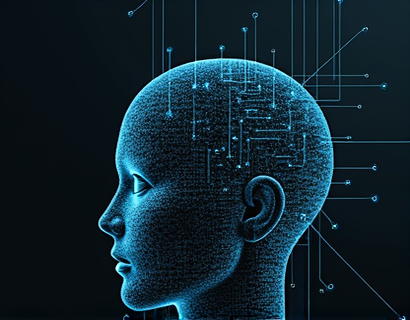AI-Powered Chat Interface: Your Instant Resource for Comprehensive ICU Knowledge and Enhanced Healthcare Decisions
The integration of artificial intelligence in healthcare has opened new avenues for improving patient care, enhancing communication, and providing instant access to critical information. One such innovation is an AI-powered chat interface designed to serve as an immediate resource for comprehensive knowledge about Intensive Care Unit (ICU) services, industry insights, and essential healthcare information. This platform is particularly beneficial for healthcare professionals, ICU staff, caregivers, patients, and healthcare administrators who require timely and accurate data to make informed decisions.
Enhancing Patient and Caregiver Communication
The primary goal of this AI chat interface is to bridge the gap in communication between healthcare providers and patients or their caregivers. In the high-stress environment of an ICU, where every minute counts, ensuring that critical information is readily available can significantly impact patient outcomes. The chat interface serves as a real-time information hub, providing users with detailed insights into ICU services, treatment options, and the latest industry developments. This immediate access to information empowers patients and caregivers to actively participate in healthcare decisions, fostering a more collaborative and transparent relationship with medical teams.
Comprehensive ICU Knowledge at Your Fingertips
The AI-powered chat interface offers a vast repository of knowledge specifically tailored to ICU services. Users can query the system about various aspects of ICU care, including but not limited to, critical care medicine, respiratory support, cardiovascular monitoring, and infection control. The interface uses natural language processing to understand and respond to user queries accurately and efficiently. Whether it's understanding the function of specific ICU equipment, grasping the protocols for managing critical conditions, or learning about the latest advancements in ICU technology, the chat interface provides comprehensive and up-to-date information.
Educational Resources for Healthcare Professionals
For healthcare professionals and ICU staff, the chat interface is an invaluable tool for continuous learning and professional development. The platform can offer detailed explanations of complex medical procedures, guidelines for best practices, and updates on clinical research. This ensures that medical staff stay informed about the latest developments in critical care, enabling them to provide the highest standard of care to their patients. The AI can also assist in answering frequently asked questions, reducing the time spent on information retrieval and allowing staff to focus more on patient care.
Real-Time Updates and Industry Insights
The healthcare industry, especially the ICU sector, is constantly evolving with new research, technologies, and protocols. The AI chat interface is designed to provide real-time updates on these changes, ensuring that users have access to the most current information. This feature is particularly useful for healthcare administrators who need to stay informed about industry trends, policy changes, and regulatory updates. By integrating with reputable sources and databases, the chat interface ensures that the information provided is reliable and trustworthy.
Decision Support for Healthcare Administrators
Healthcare administrators play a crucial role in managing ICU operations and ensuring the smooth functioning of healthcare facilities. The AI chat interface can serve as a decision support tool, offering data-driven insights to aid in strategic planning and operational improvements. Administrators can use the chat to gather statistics on patient outcomes, resource utilization, and staff performance. The AI can also suggest best practices based on industry benchmarks, helping administrators make informed decisions that enhance the overall quality of care.
Improving Patient Safety and Outcomes
One of the most significant benefits of the AI-powered chat interface is its potential to improve patient safety and outcomes. By providing immediate access to critical information, the chat interface helps reduce errors and miscommunications that can occur in high-pressure environments. For instance, caregivers can quickly verify medication dosages, understand patient histories, and access emergency protocols. This level of accessibility ensures that care is consistent and accurate, reducing the risk of adverse events and improving patient recovery rates.
Enhancing Family Support and Education
Families of ICU patients often experience anxiety and uncertainty, making it essential to provide them with clear and understandable information. The chat interface can serve as an educational tool for families, explaining medical conditions, treatment options, and the role of the ICU in a patient's care journey. By keeping families informed and involved, the chat interface helps alleviate their concerns and supports their role as advocates for their loved ones. This enhanced communication can lead to better patient outcomes and a more supportive healthcare environment.
User-Friendly Design and Accessibility
The design of the AI chat interface is user-friendly and accessible, ensuring that it can be used by individuals with varying levels of technical expertise. The interface is optimized for multiple devices, including smartphones, tablets, and desktop computers, making it convenient for users to access information anytime and anywhere. The natural language processing capabilities allow users to interact with the chat in a conversational manner, reducing the learning curve and making the platform more approachable.
Multilingual Support
To cater to a diverse user base, the chat interface offers multilingual support, breaking down language barriers and making information accessible to non-English speakers. This feature is particularly important in multicultural healthcare settings where patients and their families may not be proficient in the primary language of the healthcare facility. By providing information in multiple languages, the chat interface ensures that all users can benefit from the resources available, promoting equity in healthcare access.
Integration with Electronic Health Records
One of the key strengths of the AI chat interface is its ability to integrate seamlessly with electronic health records (EHRs). This integration allows the chat to access and provide real-time patient data, ensuring that the information provided is accurate and up-to-date. Healthcare providers can input patient details, and the chat can retrieve relevant medical history, current medications, and test results. This streamlined process not only saves time but also reduces the risk of errors associated with manual data entry.
Enhancing Clinical Workflows
The integration with EHRs also enhances clinical workflows by providing quick and easy access to critical information during patient interactions. For example, a physician can ask the chat about a patient's allergy history while examining them, receiving an immediate response without the need to manually search through the EHR. This efficiency can lead to faster diagnosis and treatment, ultimately improving patient care.
Privacy and Security
Given the sensitive nature of healthcare information, privacy and security are paramount. The AI chat interface adheres to strict data protection standards, ensuring that all user interactions and data exchanges are secure and confidential. The platform uses encryption protocols to protect user data and complies with regulations such as HIPAA, safeguarding patient privacy. Users can trust that their information is handled with the utmost care and security.
Continuous Improvement and Feedback
The AI chat interface is designed to learn and improve over time through continuous feedback and machine learning algorithms. User interactions are analyzed to refine the chat's responses and enhance its accuracy. Healthcare professionals and users can provide feedback on the information provided, helping to identify areas for improvement and ensuring that the chat remains a reliable resource. This iterative process ensures that the platform evolves to meet the changing needs of the healthcare community.
Conclusion
The AI-powered chat interface represents a significant advancement in healthcare technology, offering a comprehensive and accessible resource for ICU knowledge and informed decision-making. By enhancing communication, providing real-time updates, and integrating with EHRs, the chat interface supports better patient outcomes and improves the overall quality of care. As healthcare continues to evolve, such innovations will play a crucial role in shaping the future of patient care and healthcare administration.










































